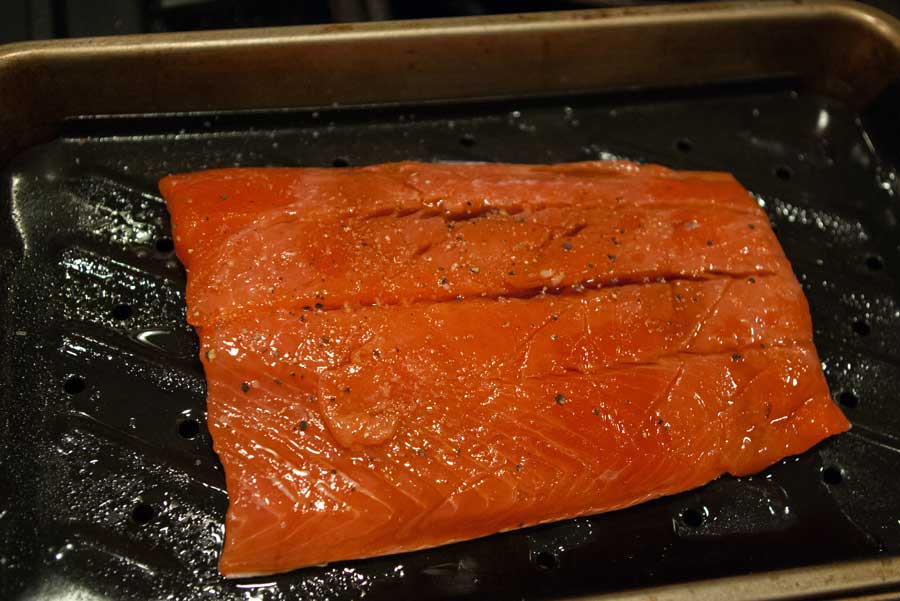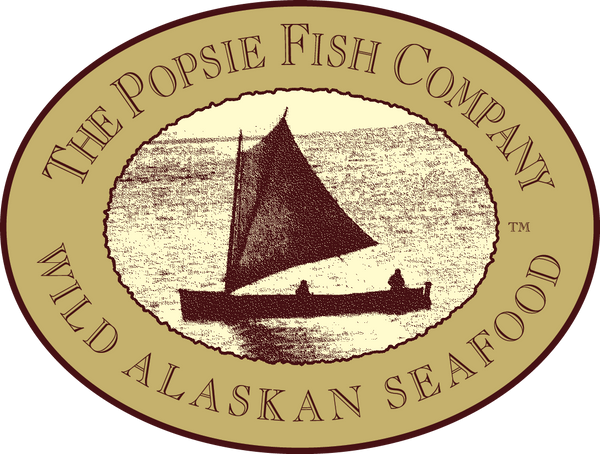
How to Slow Roast Salmon
What is slow roasting?
Roasting at temperatures of between 200 ℉ to 300 °F is considered slow roasting. The benefit of slow-roasting is that this method retains the abundant natural moisture of the fish and produces tender, succulent, almost silky salmon.
What are the benefits of slow roasting?
Slow roasting is a foolproof method of using gentle heat for getting tender, evenly cooked, succulent salmon every time. It’s one of our favorite ways to prepare a delicious salmon meal quickly, with little preparation time needed. An added benefit is that if there are any leftovers, these moist wild salmon pieces reheat easily, lending themselves to quick and delicious innovation. They are also good cold. (See below for ideas.)
Choose premium wild salmon
Begin with the best quality wild salmon you can buy. Wild Sockeye salmon is one of America’s most delicious, abundant, healthy and sustainable natural resources, and it’s only available from Alaska.
Choose carefully where to buy your wild salmon. The Popsie Fish Company is a trusted and sustainable source for premium wild caught sockeye salmon from the pristine waters of Bristol Bay, Alaska. We deliver beautifully packed frozen salmon right to your door.
Slow roasting salmon is simple
Thaw your wild salmon filet overnight in the refrigerator. Let sit out at room temperature for 15-20 minutes. Gently pat thoroughly dry, skin included. Preheat your oven to 275 °F. Choose a baking pan and line it with aluminum foil or parchment paper to make clean-up easy. Brush salmon liberally with olive oil on both sides, or alternatively, simply lay one or two patties of butter on it. Generously sprinkle with salt - again, on both sides. Fish, oil and salt. That’s all that’s needed to prepare your salmon for slow roasting!
How long should I slow-roast it?
Timing of course depends on how big and thick your particular wild salmon filet or portion is. It could take only ten minutes, or up to thirty minutes, to cook your salmon to perfection. As it cooks, it will change from translucent (raw) to opaque (pink). At about six minutes, take a peek. If it’s losing its translucency, gently press down on top of your filet with a fork or with your finger. If the salmon separates easily along the white lines of fish fat, it’s finished cooking. It may still have a hint of translucency at its thickest point, and may continue cooking for a minute or two after you remove it from the oven. Perfectly slow-roasted wild salmon is moist, tender and flaky.
Check salmon temperature, not a clock
A better gauge than timing, however, is temperature. You want to remove your fish when it reaches 120 °F in the center of the thickest part. We understand that even at that perfect temperature, it might not look completely done to you. It has a glassy, self-basted flesh that could appear undercooked. But again, if you push down on the outside of the fish with your finger or a fork, you’ll see that it flakes like a perfectly cooked piece of salmon should flake when it is indeed done. Some cooks recommend a temperature of 125 °F or even up to 140 °F for well done salmon. It’s a matter of preference, but over-done salmon can be tough, and you don’t want that. We recommend taking it out at the lower temperature and letting it sit for two or three minutes. A quick pop back in the oven just before serving can solve any underdone tendencies, and yield a sizzling hot salmon.
Customizing your slow-roast salmon recipe and associated leftover dishes
The beauty of this slow-roasting method is that you can make your salmon dish look and taste different every time you roast it by adding your own seasonings, spices, sauces or citrus slices. Thus, each meal can be a new visual and taste treat. Also, leftover slow-roasted salmon, which is wonderfully moist, can be used in so many easy, creative meals. Try wild salmon cakes, salmon quiche, or salmon pasta salad. Make a salmon dip, or salmon sandwiches.
Or pan sear your already-roasted skin-on salmon portion and marvel at its taste and versatility. For more info on pan-searing, you check out these cooking tips on how to pan sear salmon.
A quick overview of other oven-cooking methods
If you’ve become curious about the different methods of using the oven for cooking wild salmon, here are some tips and links so you can explore further:
- Slow roasting salmon means cooking it in the oven at a temperature between 200 °F and 300 °F. We recommend 275 °F for a perfect dish. Watch this video with Chef Barton Seaver (attached below) showing you how easy it is to slow roast salmon.
- Oven poaching refers to cooking at a low heat, similar to slow roasting, but poaching generally indicates that a liquid (such as wine) is used. However, because salmon is so naturally moist and full of healthy fats, if the baking dish is covered with aluminum foil, the fish will actually poach in its own liquid! Here’s an intriguing poaching recipe for halibut.
- Baking is at temperatures up to 375°F. Some experts feel that the term “baking” should only refer to cooking breads, pastries and desserts, but others politely disagree. Baked Salmon recipes are legion, and one of our favorites is Tony’s Every-Night Salmon.
- The terms Baking and Roasting are often used interchangeably, since both methods use dry heat to cook the food. When cooks differentiate between the two, roasting usually indicates a temperature of 400 °F and above. You'll love this exceptional roasted salmon recipe with a unique sauce.
- Broiling uses top-down heat at high and extra-high temperatures to brown the outside without overcooking the inside. Broiled salmon is quick and delicious.
All of these methods can be used to cook your salmon to perfection, but if you’re boasting about slow-roasting, we understand!
Award-winning chef Barton Seaver teaches a simple method for baked salmon. The secret is low and slow.
